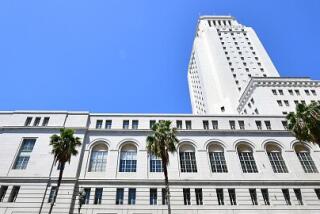Toyota, driver’s family differ on cause of fatal 2009 crash
- Share via
Closing arguments in a $20-million lawsuit against Toyota Motor Corp. started Monday with attorneys painting widely different portraits of a horrific 2009 wreck that killed an Upland woman.
A Los Angeles County Superior Court jury will decide whether Toyota was negligent by not including a particular safety device on Noriko Uno’s 2006 Camry, or whether the crash resulted from her poor driving. Uno’s car sped to 100 mph before hitting a telephone pole and a tree.
The case, expected to go to the jury Tuesday afternoon, will set the direction for hundreds of similar lawsuits against the automaker over incidents of unintended acceleration.
In closing arguments, Garo Mardirossian, the attorney for Uno’s heirs, said the 66-year-old bookkeeper left a message for the jury through the raised emergency brake found in her wrecked Camry.
He said that proved that she struggled to regain control of the car. The message: “I did everything to save my life and the lives of others.”
Prior litigation focused on whether an electronic defect in some Toyotas triggered unintended acceleration. But Mardirossian instead argued that Toyota should have installed a low-cost brake override system in the car. The plaintiffs argued that the device — which deactivates the accelerator when a driver hits the brake — would have prevented the crash.
Toyota countered that Uno simply mistook the gas pedal for the brake. The override system, the automaker contends, would not have prevented the crash because Uno never used the brake.
Mardirossian argued that testimony and evidence throughout the nine-week trial proved that Toyota, starting as early as 2001, installed a low-cost brake override safety system on cars it sold overseas but not in the U.S. That could have prevented the accident, Mardirossian said.
Previously, Mardirossian argued that that Uno’s foot became wedged on the gas pedal after her Camry was broadsided at an Upland intersection by a Lexus driven by Olga Belo, a codefendant in the case.
That collision shifted Uno in her seat, Mardirossian said, causing the heel of her foot to become wedged. He said she tried to brake with her left foot but could not apply enough force to stop the car.
On Monday he recounted evidence he argued proved Uno tried to stop the car: tire marks on the roadway leading to the crash site, witness reports of seeing illuminated brake lights on the Camry and the raised emergency brake lever. If the vehicle had a brake override system like other Toyota cars, the car would have stopped, he said.
Just 60 days after the accident, Toyota issued a massive recall for newer Camrys to install brake override systems on the cars, he noted.
However, Vincent Galvin Jr., an auto product liability attorney representing Toyota, argued an override system would not have prevented the accident that killed Uno. He said the accident was most likely caused by Uno mistaking the gas pedal for the car’s brakes.
“The foot was not stuck; it was easily removable,” Galvin said.
He called the stuck-foot theory “a made-up story to account for an odd and unusual circumstance where Mrs. Uno drove the wrong way down the street.”
Uno’s Camry had no defect, and in fact, the brakes are strong enough to overcome the power of the car’s engine, he told jurors.
“The brakes would have stopped the car in this accident if Mrs. Uno would have used them,” Galvin said.
Forensic evidence shows that the emergency brake lever triggered as the car slammed into the tree — not because Uno had pulled it, Galvin told jurors.
Already, Toyota has spent well over $1 billion settling lawsuits involving allegations of unintended acceleration, but the world’s largest automaker still faces hundreds of other cases awaiting trial.
Toyota settled the most notorious acceleration case — involving a California Highway Patrol officer who was killed along with his family — for $10 million in late 2010. It also settled a class-action suit filed by Toyota owners who contended the defects hurt the value of their cars. Toyota agreed to pay as much as $1.6 billion in the settlement, which an Orange County judge finalized last month.
Toyota has denied an electronic defect that would cause sudden acceleration, saying many reported incidents involved drivers mistaking the gas pedal for the brake. Toyota still faces about 300 personal injury and death lawsuits in state and federal courts related to sudden acceleration.
Twitter @latimes







